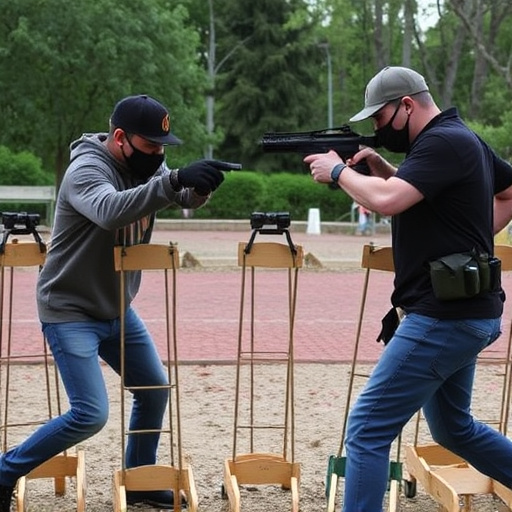Electric current spread patterns are key to optimizing the concealed stun gun flashlight combo. By analyzing these patterns, engineers can ensure even power distribution, prevent hotspots, and manage energy dissipation, enhancing safety, reliability, and efficiency. Understanding how current flows through this hybrid device is crucial for design optimization, addressing potential hazards, and improving performance, making it a safer and more effective self-defense tool.
Electric current spread patterns are crucial in understanding the performance and design of electrical devices. This article delves into the intricate world of current flow analysis, focusing specifically on the impact of innovative tools like the concealed stun gun flashlight combo. By examining how this multi-purpose device influences current flows, we gain insights that enhance safety and efficiency. The discussion covers theoretical foundations and practical implications, offering a comprehensive guide for professionals and enthusiasts alike.
- Understanding Electric Current Spread Patterns
- Analyzing the Concealed Stun Gun Flashlight Combo's Impact on Current Flows
Understanding Electric Current Spread Patterns

Electric current spread patterns are crucial in understanding how energy flows through various materials, including those found in a concealed stun gun flashlight combo. By analyzing these patterns, engineers and scientists can optimize device performance, ensuring efficient power distribution and enhanced functionality. This is particularly important in compact designs like stun guns that combine lighting and electrical elements.
The unique integration of electronics within these devices necessitates precise current flow management to deliver both powerful lighting and effective stun capabilities. Through detailed pattern analysis, manufacturers can identify potential hotspots, ensure even energy dissipation, and prevent unexpected behavior. This meticulous approach contributes to the overall reliability, safety, and efficiency of concealed self-defense tools like stun gun flashlights.
Analyzing the Concealed Stun Gun Flashlight Combo's Impact on Current Flows

The concealed stun gun flashlight combo presents a unique challenge in electrical current spread pattern analysis. This hybrid device combines the functionality of both a stun gun and a tactical flashlight, offering enhanced self-defense capabilities in low-light or dark environments. Understanding how current flows through such devices is crucial for several reasons, including safety, effectiveness, and design optimization. By analyzing the impact of this combo on current flows, researchers can gain insights into its operational mechanics, identify potential hazards, and explore avenues for improvement.
The integration of a stun gun and flashlight creates a complex interplay of electrical components, where the flashlights’ circuitry interacts with the stun gun’s high-voltage output. This interaction affects the overall current distribution, potentially leading to unique patterns that differ from standard flashlights or stun guns alone. Understanding these dynamics is essential for ensuring user safety, as incorrect current flow can result in reduced effectiveness or even harm. Moreover, this knowledge enables engineers to make informed design choices, optimizing the combo’s performance and addressing any limitations in current spread management.
The analysis of electrical current spread patterns, particularly in devices like the concealed stun gun flashlight combo, is crucial for understanding and optimizing energy distribution. By examining how current flows through various materials and components, we can enhance safety features and performance in such innovative tools. The unique design of the concealed stun gun flashlight combo presents intriguing challenges and opportunities for electrical engineers, underscoring the importance of continued research and development in this area.
